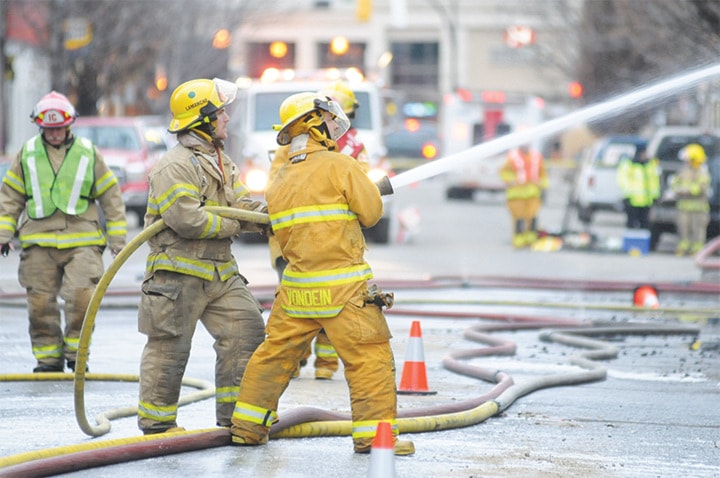Penticton’s fire chief is recommending the city lower its standards for how often buildings in the city receive a fire inspection. “Over the past two years, the fire department has only been able to achieve approximately 50 per cent of the inspection frequency as per the existing policy,” said Fire Chief Wayne Williams, reporting to city council Monday evening. The fire services review, completed last year by Behr Energy Services, concurs. Based on the number of properties needing inspection and frequency required, it says the fire department doesn’t have the capability to meet those goals using the current system of two fire inspectors. William said they plan to adjust inspection frequencies on high risk properties — restaurants, industrial workshops, care homes and day cares — and reduce the frequency of inspections on lower risk buildings like retail shops and medical offices. “We believe the new frequency is a more achievable standard and provides a comparable best practice relative to other fire services within the province,” said Williams. “It also will enable our staff to focus more time on non-compliant occupancies, which will reduce the overall deficiency levels and further reduce the risks to the public and responders.” The inspections do fulfill two very necessary functions, according to Williams. Along with the public safety aspect, they also help the firefighters and the department familiarize themselves with the various buildings they might be called to in an emergency. Under the current policy, theatres, churches and apartment buildings were among the group requiring six inspections per year. Most will now drop to one or two inspections a year, with the lowest risk buildings, like retail shops, just once every two years. The highest risk category is scheduled for three inspections per year: assisted living, group homes, care facilities and the hospital. Admitting he owned both, Coun. John Vassilaki wondered if the frequency for apartments and nightclubs was high enough. “I just want to make sure everyone is safe in those buildings, even though it will put the onus on me again to take care of those buildings better than most,” said Vassilaki. Williams said problem buildings will get special treatment. “The buildings we have regular problems with, we will increase their frequency,” he said, noting that such a building could be raised from the low to medium risk category. “Even though it says one per calendar year, if the inspectors are constantly finding problems with the building, they will increase the frequency and go back before that year is up.” It has been a number of years since the city reviewed its inspection frequency policy, and that was developed at a time when the provincial office of the fire commissioner was involved in recommending those frequencies. But William said that many communities have determined that these rates are not achievable or reasonable given periods of high growth, availability of resources and the level of risk involved. Council voted unanimously in favour of accepting the new fire inspection schedule.
